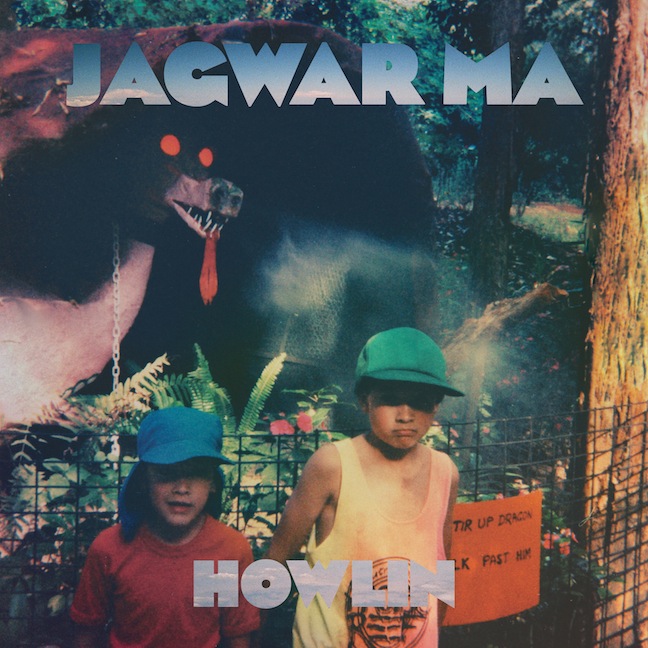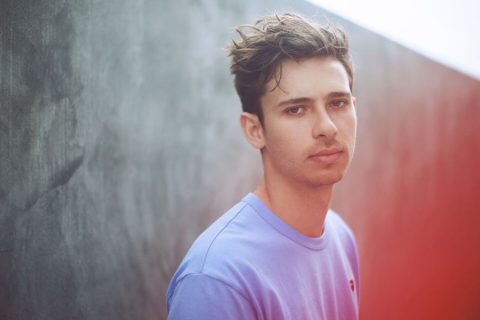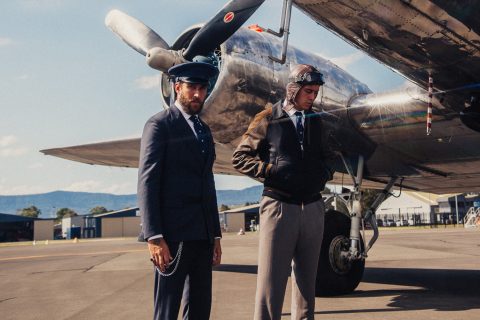
Debut Albums Are Not Supposed To Be This Good…
Let’s Just Settle Down & Hold Each Other Near… So cries out the fitting denouement “Did You Have To (Float On)” on Jagwar Ma’s impressive debut album, Howlin. It’s perhaps the most “Balearic” sounding song on the album, and one that embodies the ironic and natural, diverse birth of this album, all which makes for a transcendent 13 song psychedelic whirlwind.
The debut album sees the two-man outfit Jona Ma and Gab Winterfield (joined live by Jack Freeman) crossing many genres while filling in the gaps between the dance floor and the bedroom (much like Classixx’s recent doozy). Utilizing an array of instruments–both real and synthetic–there’s a lot happening on Howlin’. At times you’ll hear tropical-pop remnants of the Beach Boys (“Loneliness”), the soulful chords of the O’Jays (the opening of the gem “Uncertainty”), Four Tet (“Four”, a clear–if unintentional–ode to an inspiration) and the blissful sounds of an Air (“Backwards Berlin”).
And that is a complete and utter accident. As with “Did You Have To Float On”, the duo made no conscientious effort to duplicate any sound—it just, like the band and the album, sort of came to be. The band—let alone the album—is the product of coincidence. With deep roots in music—both Jona (as both producer and guitarist for the Valentinos and Knife Machine) and front man Gabriel Winterfield have traversed Australia’s underground circuit—as the duo was formed organically at a chance meeting after a show. Thereafter, they struck a chord, began working on music together, and out came their debut single.
Somewhere along the way and before Jagwar Ma had even Jagwar Ma (summers of 2010 and 2011), Jona took a trip to Le Briche, France (two hours of South of Paris), where he helped another friend fulfill a dream—and build a studio.
After “Come Save Me” and “The Throw” took off, it was only a matter of time before an entire album came to fruition. Thus, things took a French twist, as the duo headed East for a new setting away from the daily grind. Spanning two different continents and a whole lot of studio time, what evolved is one of the more inventive, enjoyable albums we’ve haerd this year.
We caught up with Jona to discover exactly how the group and this stunning debut album was born.
Barry Poppins: How did France/this church-turned-studio shape the album?
JM: To be honest, I’m a bit cynical about the concept of the environment shaping music. I have this Philosophy that there’s greater forces at play when it comes to music–when you shut the door of a studio, you’re in a studio. It’s about the equipment being used and the people in the room. [Note: the trip to France was clearly as much about getting away and decompressing as it was seeking inspiration–which clearly there was already plenty of.)
BP: But there’s this Balearic, blissful vibe on some of these tracks. Was this intentional or at all beach induced?
JM: It’s funny cause its sort of those genres I’ve always been into and not known it.
BP: How many synths were used here?
Barry Poppins (very high): So how high were you guys when you made this album?
Jona Ma: Actually, we were dead sober. Once you’ve had those experiences you’ve kind of downloaded those experiences and they’re there to stay. You’re riding with that sensation in mind. If you’re actually, high it’s harder to operate.
BP: Come on, you were in France. You weren’t even under the influence of wine and cheese?
JM: I was going to this place a friend had and he was kind of just living there. Dream to set up a studio there its like a church with different buildings, tons of land…hung out/built the studio…before Jagwar Ma started (2010/2011 two summers). Lets go and be like Samurais and approach this like them, get fit, and healthy, output. 20K bike rides and listening to music on headphones.
BP: How many synths were used on this album?
JM: Most of it is a CS5, which is this shitty Yamaha synth that costs like 100 Euros or something…just cause that’s what was there. There was also the SH101, MS20 (used for live shows and a console that Connie Plank, Kraftwerk’s engineer, had built), and the ARp2600 (as made famous by Todd Terje–Jona used it to run vocals throw on many tracks to filter and springboard the voice–which clearly had the intended affect, as Gab’s voice takes on different personas throughout).
Note: With synth-heavy, psychedelic vibes throughout,you’d think the two were taking a trip to Alice in Wonderland during the making of this album which couldn’t be farther from the truth. The Time & Space Dubs from Richard Norris exemplify this style poetically.
Throughout, the layered synthesizers and filtered, transformed vocals give the album an undeniable, psychedelic feel that naturally lends itself to countless, clichéd Tame Impala, Stone Roses, and other played out comparisons.
I then asked Jona about an American tour–which he confirmed, and about any experiences with America he had. The result was a pretty cool story.
BP: While in Los Angeles, did any moment or aspect of American culture stand out to you?
JM: I remember going to Low End Theory (an infamous party) and it was kind of weird cause at the end of the night they played a Mehdi remix and said “RIP Mehdi” and it was just one of those moments.
And that is sort of how this album feels–like a total and utter moment.
Before I’ve realized how sick of the comparisons Jona is, I mention that there’s an ethos about the album that reminds me of Pink Floyd. The at times clashing elements give way to moments of clarity throughout the album, where all the noise and confusion suddenly feels at peace with everything in your head. “You know, I’ve never really even studied their catalogue.” And that’s the thing about this album and, moreover, Jagwar Ma—they’re not trying to emulate the psychedalia movement of the 70s, the disco of the 90s, or the current EDM wave.
Whether you’re a rave child or a beach bum, there’s something in this album to hold onto.While their singles helped catapult Jagwar Ma to preliminary notice—this diverse and deft album should propel this duo onto the main stage.





Comments